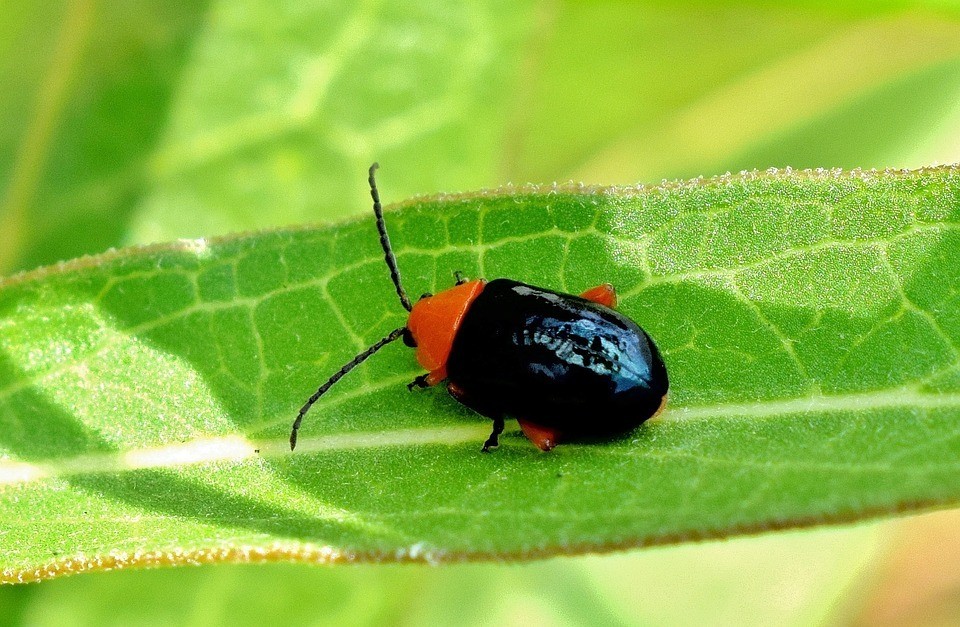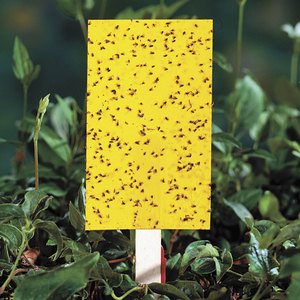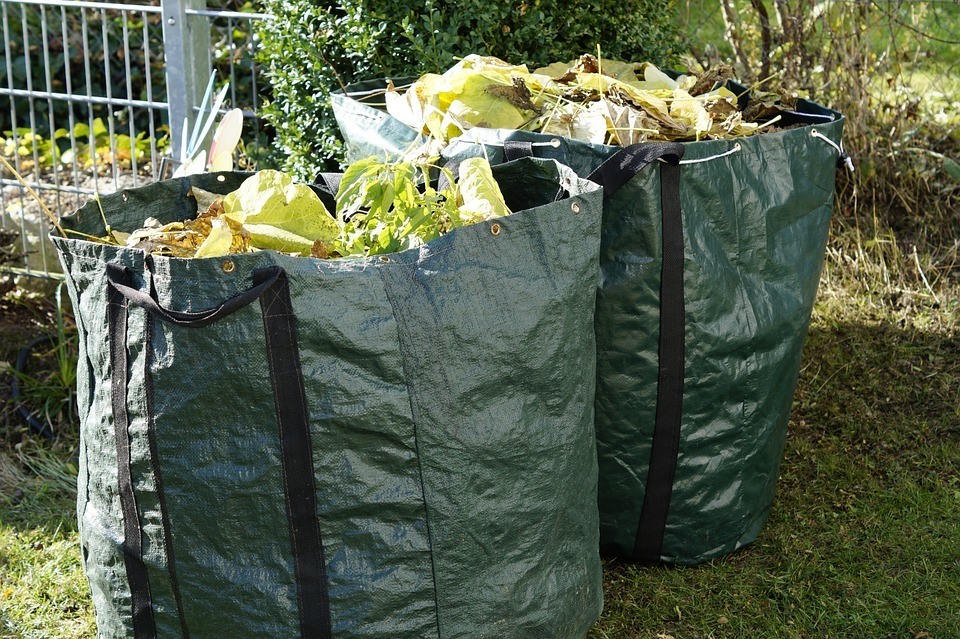What Plants Does the Flea Beetle Attack?
Gardening is an increasingly popular hobby, and it’s easy to see why.
Gardening is relaxing, fun, simple, and therapeutic. Plus, it sure feels good to see the fruits of your labor!
But there are some things you need to be careful about when gardening. You want to keep your plants healthy and pest-free. One way to do this is to learn about what plants are in danger from which pests.
The flea beetle is a common pest in backyard gardens in recent seasons, so you will want to find out what plants you should be worried about. This way you can protect your lovingly-tended plants from flea beetles and other nasty insects.
What is a Flea Beetle?
Before you find out what plants to protect and how to keep them safe from the flea beetle, you’re going to want to know exactly what a flea beetle is.
True to its name, the flea beetle shares characteristics with both a flea and a beetle. They look like small beetles, but they are able to jump like flees if disturbed or bothered. These qualities make them pesky and irritating, on top of their already unattractive appearance.
One thing is for sure: no one wants these unsightly bugs in their garden.

What Do Flea Beetles Look Like?
Flea beetles are small (only 1/16th inches long) and usually shiny, just like normal beetles you may find floating in your pool or clinging onto your tree leaves. These insects come in a variety of colors, including black and tan, and are either spotted or solid.
Once you have identified your garden pests as flea beetles, you can begin to look for signs they are damaging your plants.
What Plants Does the Flea Beetle Attack?
Unfortunately, flea beetles attack a wide variety of plants, especially those common in household gardens. Plants at risk include mainly vegetables, such as beans, tomatoes, corn, cabbage, peppers, lettuce, broccoli, cucumbers, turnips, potatoes, and eggplant.
You probably love being able to grow these easy vegetables in your own garden so you can munch on them later. To make you do get to eat them, make sure insects don’t get to them first!
You need to be careful to always be on the lookout for pests such as flea beetles, so if you spot them attacking your garden, you can stop them before the damage gets too serious or widespread.

What Does a Flea Beetle Attack Look Like?
Flea beetles feast on the external parts of plants, so it is typically easy to spot when they have begun attacking your garden. You should be able to see the damage without much searching.
When a flea beetle attacks your plants, you will see many small round holes, called shotholes. These holes will be especially evident on young seedlings, because damage spreads most rapidly on these new plants. Remember not to transfer new plants into your garden until they have at least three leaves, making them less susceptible to flea beetle attacks.
Your leafy greens will become quickly damaged by the bites the flea beetles leave behind, and new leaves are most susceptible to the risk they pose. This is because plants that have already been established are usually too large for the small flea beetle to attempt to attack. The flea beetle becomes intimidated by the overpowering size of the large leaves.
Even though flea beetles usually only attack new plants, the damage they can do among the entire garden should be seriously considered. Even if your plants do not look extremely damaged, you still need to be careful of what you are picking and eating.
What Lasting Damage Do Flea Beetles Cause?
A serious threat posed by flea beetles is the spread of bacterial infections through wilt. Another name for this phenomenon is “Stewart’s Wilt.”
Wilting is easily transmitted from plant to plant, so even if flea beetles have only attacked your peppers, their bacteria will spread to your other vegetables quickly, and cause these to wilt as well.
You don’t want all of your hard gardening work to go out the window, so please try methods of preventing flea beetles from entering your garden in the first place.
How to Keep Flea Beetles Out of Your Garden
As was previously mentioned, flea beetles are particularly fond of young seedlings. One way to keep these pests away from your new plants is cover them up.
Use Floating Row Covers
Your best bet at keeping away insects is to use floating row covers.
You are probably wondering exactly what floating row covers are. These guards protect your plants from all sorts of dangers, such as frost and wind. Luckily, they are very easy to use, even for beginning gardeners.
These row covers float above the crops without support, keeping away birds and insects easily. The fabric-like material still allows light and water in, so your plants will still germinate and grow desirably.
- PROTECT YOUR PLANTS: Our floating row covers for vegetables and fruits are made to provide you with a simple and easy...
- WARM & SHIELD CROPS: Besides being the perfect choice to keeping plants warm, our frost protection fabric cover can also...
- REUSABLE & BREATHABLE: The frost blankets for outdoor plants are made using non-woven fabric that allows sunlight and...
If you do decide to use a floating row cover, please make sure they are completely sealed. Also be certain to place the covers on immediately after transplanting the plant, so pests such as the flea beetle have no time to find and target the plant.
Use Natural Repellants
It can be quite simple to prevent flea beetles from coming after your plants. All you need to do is repel the bugs using plants they do not like.
Flea Beetles will typically stay away from plants such as basil and catnip. They are also turned off by tap crops such as mustard and radish. These “traps” will draw in the pests and keep them away from your more valuable plants.
Place Sticky Traps
The traditional yellow or white sticky trap has proven effective against flea beetles. The bugs can be captured in white traps as the jump throughout the garden, which they are sure to do.
Place the sticky traps every 15 to 30 feet in your garden. The traps contain no harmful chemicals, so the bugs will be safe.
Another benefit of these traps is they do not attract helpful bugs, so only pests will be removed from your garden.
Flea beetles are attracted to both the white and yellow traps, and customers have been pleased with both traps’ ability to catch the insects easily.

image from: parkseed.com
Use Organic Spray
Typical insecticides are usually not much use against flea beetles, and do more damage to your garden, so only use these as a last resort.
Instead, try using an organic spray you can make on your own.
All you need to do is mix together rubbing alcohol, water, and liquid handsoap. Use mostly water so your plants are not damaged, and make sure you test out the spray on a small area first to see how it will affect your garden.
If the small area you have tested does not show any negative effects, proceed to spray the rest of the plants with your homemade solution. It should keep the pests away.
An organic spray you can buy if you would rather not make one yourself is 70% Neem Oil. This oil should be mixed with water before sprayed in your garden.
Neem Oil will prevent fungal diseases, adult insects, larvae, and eggs from ruining your garden. Reviews for this spray are overwhelmingly positive, with many garden owners claiming it is the only insecticide they will ever use.
How To Get Rid Of Ants Without Killing Them
5 Tips For Beginners
Maintaining a Pest-Free Garden
Now that you have learned how to keep flea beetles out of your vegetables, make sure you keep your garden otherwise healthy as well.
Keep it Clean
Keep your garden well-sanitized at all times. This means you need to clear leaves that have fallen along with other debris on a regular basis.
If the garden is kept neat and clean, flea beetles will have nowhere to keep warm or call home in your yard. They won’t want to snuggle into your cozy little harvest anymore.
Along the same lines, if you do suspect flea beetles are trying to keep warm under your soil, be sure to till the ground after the first frost. This will pull up any flea beetles or other insects that may have tried to sneak underground for the winter.
Expose the flea beetles so they will not spend the winter in your garden, causing unnoticed damage.

Attract the Good Guys
Also try attracting beneficial insects such as ladybugs, hoverflies, and spiders into your garden. These bugs and their larvae will control pests such as the flea beetle by gobbling them up or sucking the juice out of them.
This sounds a little gnarly, but it’s really just the cycle of life. Most gardeners know a lot about this phenomenon, as they see it occur every season with their own plants.
Recommended For You
Now You Know How to Handle These Garden Pests
One thing you no longer have to worry about when it comes to your garden is an onslaught of flea beetles, now that you know all the best ways to identify, prevent, and repel their attacks.
Happy gardening!
Last update on 2024-04-20 at 10:38 / Affiliate links / Images from Amazon Product Advertising API



